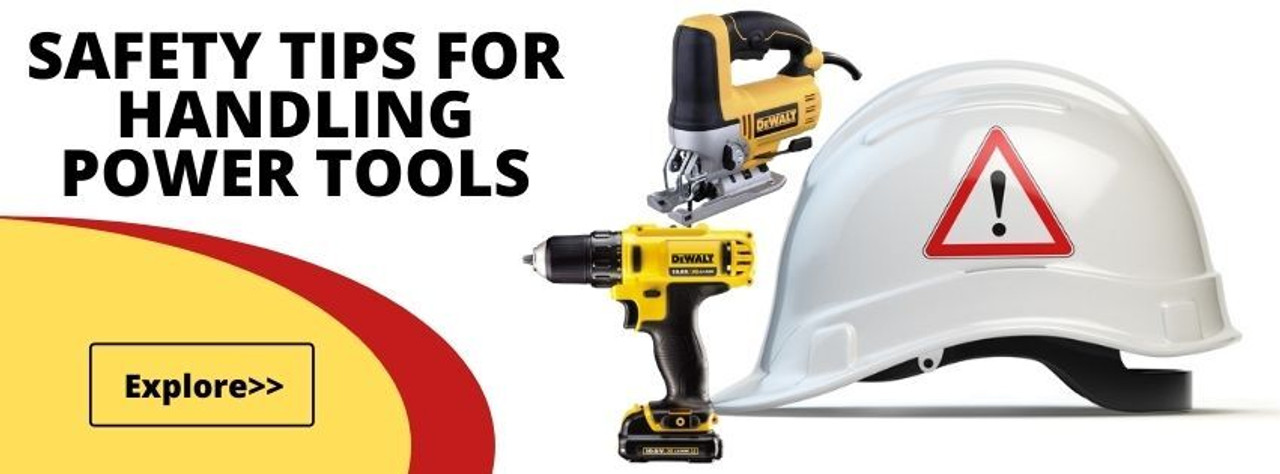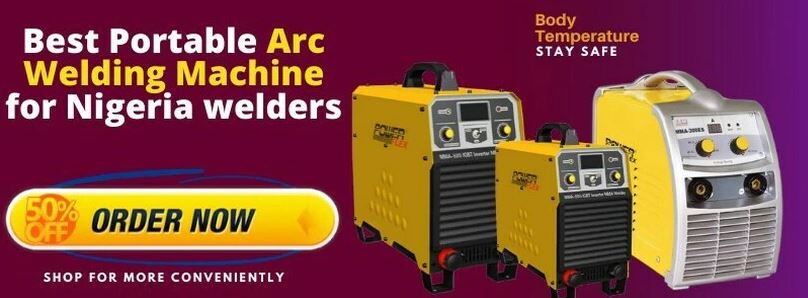Safety Tips for Handling Power Tools
Safety Tips for Handling Power Tools
Tables of Contents
Introduction
Causes of Power Tools accidents
General Safety Tips for Hand and Power Tools
Safety Tips for Electric Power Tools
Safety Tips for pneumatic Power Tools
Frequently Asked Questions About Power Tools
Conclusion
INTRODUCTION
Power tools are highly required in heavy industrial and construction operations owing to their rate of getting the job done in a short time. However, there are dangers associated with its use, especially when safety practices are not duly and strictly followed. The danger of hand and power tools is evident in various hospital emergency room visits. Report shows that power tool incidence reaches a toll of about 400,000 cases for each year in developed nations. But many of those emergency room visits are caused by misusing tools and not working safely. When used correctly and with the proper safety measures, and ensure you put on all appropriate safety equipment before any operation, you can significantly reduce the chance of an accident.
CAUSES OF POWER TOOLS ACCIDENTS
There are a plethora of causes of power tool accidents in the workplace, but here are few identified causes . they includes the following:
- Inattention or Complacency - Inattention to details or the surroundings aids throwing caution to the wind. Sometimes hurrying to beat deadlines increases the risk of accidents and injuries. No matter how competent and confident the operator, he or she must not allow himself or herself to become complacent.
- Unexpected Events - Most power tools operate at high speeds hence, when things happen, they tend to happen very quickly. Unexpected events are more likely to end badly when operators are inexperienced, plan poorly or don’t understand how a particular tool works.
- Inexperience or Overconfidence – Accidents involving novices are most often caused by a lack of necessary safety knowledge and/or respect for what a tool can do. The inexperienced tool operator may fail to identify a potentially dangerous situation. But experience, although a good teacher, can lull us into overconfidence. The foolish risks we then become willing to take can inflict very painful lessons on us and our families.
GENERAL SAFETY TIPS FOR HAND TOOLS AND POWER TOOLS
- Wear appropriate Personal Protective Equipment PPE when working.
- Buy quality tools. Many tools, including cutters and hammers, should be made of steel and should be heat-treated.
- Regularly inspect tools to make sure they are in good shape and fit for use.
- Be sure to maintain your tools by performing regular maintenance, like grinding or sharpening. Always follow the manufacturer’s instructions.
- Dress for the job by avoiding loose clothing or articles that can get caught in a tool’s moving parts, like jewelry.
- Use the right tool for the job. In other words, don’t try to use a wrench as a hammer.
- Make sure that your feet are planted on a stable surface.
- Be aware of the people around you and make sure they stay clear of the tools you are using.
- Never carry tools up a ladder by hand. Instead, use a bucket or bag to hoist tools from the ground to the worker.
- When appropriate, secure work with a clamp or vise to keep it from slipping.
- Never carry pointed tools in your pocket. Carry them in a toolbox or cart instead.
- Inspect your tools on a regular basis, checking for damage. Report damaged tools to your supervisor.
- Make sure to keep extra tools handy in case the tool you had planned to use is damaged.
- Make sure tools are stored in a safe place.
SAFETY TIPS FOR ELECTRIC POWER TOOLS
- Never carry a tool by the cord or hose.
- Never yank the cord or the hose to disconnect it from the receptacle.
- Keep cords and hoses away from heat, oil, and sharp edges.
- Disconnect tools when not using them, before servicing and cleaning them and when changing accessories such as blades, bits, and cutters.
- Keep all people not involved with the work at a safe distance from the work area.
- Secure work with clamps or a vise, freeing both hands to operate the tool.
- Avoid accidental starting. Do not hold fingers on the switch button while carrying a plugged-in tool.
- Maintain tools with care; keep them sharp and clean for best performance.
- Follow instructions in the user’s manual for lubricating and changing accessories.
- Be sure to keep good footing and maintain good balance when operating power tools.
- Keep floors dry and clean to avoid slipping while working with or around dangerous tools.
- Do not use electric tools in wet conditions unless they are approved for that use.
- Use a ground fault circuit interrupter (GFCI) or an assured grounding program.
SAFETY TIPS FOR PNEUMATIC POWER TOOLS
- Confirm that all parts of the tool are fastened securely before use.
- Never point a compressed air gun at yourself or another person.
- When you are finished using the tool, make sure that the pressure is released before you break the hose connections.
- Use a safety clip or retainer to prevent attachments from being ejected during operation, and use a chip guard when using high-pressure compressed air for cleaning. Be sure to limit the nozzle pressure to 30 pounds per square inch.
- Always wear eye protection.
- Use screens to protect nearby workers from flying fragments.
- Never leave your tool unattended.
- Never store a loaded air gun.
Frequently Asked Question (FAQ)
- How do I fix a misfiring nail gun?
Answer: The nail gun will misfire if the piston is not regularly lubricated. Unscrew the air line connector from the bottom of the nail gun with your fingers. Remove the air line hose from the nail gun. Turn the nail gun over and drip 10 drops of air tool lubricant into the air line hose hole. Place the air line hose back on the hole and screw the air line connector clockwise. Screw the valve on the air compressor three turns clockwise. Aim the barrel of the nail gun off in the distance. Fire off the trigger of the nail gun six to eight times to lubricate the piston.
- What are the most angle grinder injuries?
Answers:Most angle grinder injuries are from metal particles lodging in the operator’s eye. However, the most serious injuries are from kick-back, where the disc is thrust back violently towards the operator. Angle grinders used with cutting discs expose workers to a range of severe additional hazards. Discs can shatter or explode, sending pieces flying in all directions.
N/B: When intending to use an angle grinder or any other power tool, focus on the hazards and risks that could arise and put in place the necessary control measures. Elimination of the hazards or substitution with safer equipment should always be the first option. Always use the blade shield when grinding.
Conclusion
Power tools are revolutionary tools for industrial operations, they are widely replacing their hand tool counterparts owing to the fact that they help to accomplish tasks fast and efficiently. However, safety measures should always be in place .
For more information, maintenance, procurement, sales and services of power tools and safety supplies in Nigeria please contact GZ Industrial Supplies Nig. Ltd nationwide.
Readers like
Essential Safety Tips for Using Power Tools and Hand Tools in Your Workshop
What Power Tools Do Carpenters Use
The 10 Most Important Power Tools in Use in Nigeria 2023








